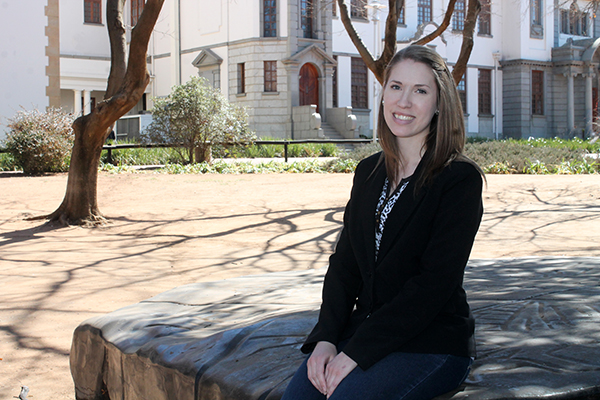Latest News Archive
Please select Category, Year, and then Month to display items
![]()
After South Africa’s battle with the record-breaking drought of 2015, Prof Andries Jordaan from our Disaster Management Training and Education Centre for Africa(DiMTEC) saw room for improvement in dealing with this kind of disaster.
Drought impact
Commercial farmers who are usually net exporters of food crops and communal farmers who own the bulk of the country’s livestock, were all hit hard in 2015. Most of the latter had no resources to spare as the drought progressed. The concern about the drought’s impact on the country’s food production and availability resulted in a joint goal of preventing food scarcity during future droughts.
Prof Jordaan’s visit to the National Drought Mitigation Center (NDMC) in Lincoln, Nebraska, in the US, several years ago prepared him to better equip communities in South Africa to deal with drought situations. “I recognised that in spite of the impact DiMTEC has been able to make on disaster preparedness, a gap remained in disaster response in South Africa.”
Sharing knowledge
In August this year Prof Jordaan again visited the NDMC. This time he requested a few key players in South Africa’s agriculture and disaster response communities to join him. With him were Janse Rabie, head of Natural Resources at AgriSA, a nonprofit organisation that functions as an interface between the government and about 28 000 South Africa farmers, and Moses Musiwale Khangale, director of Fire Services for the South African Ministry of Cooperative Governance and Traditional Affairs.
The South African delegation met with and learnt from climatologists, geospatial technologists, and outreach and planning analysts.
Humour a powerful tool to address serious issues
2017-12-06

Michelle Malan received a Dean’s medal from the Faculty of Humanities at the mid-year
graduation ceremonies for her Master’s degree.
Photo: Jóhann Thormählen
People, in most contexts, are more open to engage in serious issues such as politics and economics if it is presented in a humorous way. This makes humour a very powerful tool to address burning issues in our society.
These are some of the findings in the research of Michelle Malan, a part time lecturer in the Department of Linguistics and Language Practice at the University of the Free State (UFS).
How comedians and cartoonists use humour
The basic premise of her research, titled The Intersemiotic Translation of Humour, was to see how comedians and cartoonists take news stories and translate it into humour. She received the Dean’s medal for the best Master’s degree in the Faculty of the Humanities at the mid-year graduation ceremonies in June 2017.
“More specifically, I explored how the medium constrains potential meaning-making in cases of intersemiotic translation in which humour is constructed,” she says.
Cartoon vs a comic television show
According to her the medium in which a message is given, in this case comedy, definitely influences how one is able to form meaning from it. “For instance, a cartoon (visual medium) would have a different meaning-making potential than a comic television show.”
She also notes that one must understand the workings of humour, which includes the mediums in which it is presented, so that the intended humour does not do more harm than good.